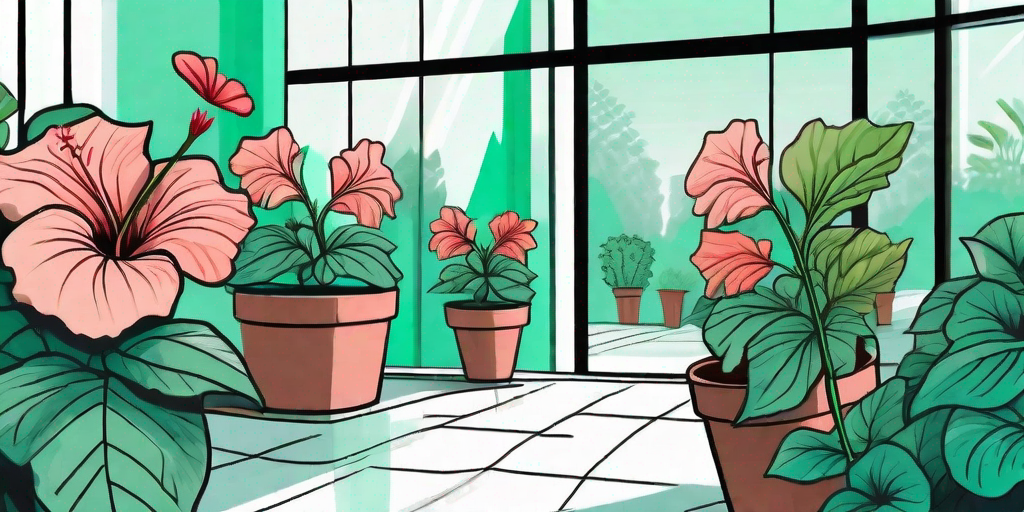
Welcome, green-thumbed enthusiasts and budding horticulturists! If you've ever wondered how to take your potted hibiscus and give it a new lease on life in your garden, you've come to the right place. This guide will take you through the process step by step, with a few laughs along the way. Because let's face it, gardening should be fun, not just a chore!
Understanding Your Hibiscus
Before we dive into the nitty-gritty of transplanting, it's important to understand the hibiscus itself. This tropical beauty is not just a pretty face; it's a complex organism that requires specific conditions to thrive.
Native to warm climates, the hibiscus is a sun-loving plant that enjoys well-drained soil and regular watering. It's a bit like the Goldilocks of the plant world: not too hot, not too cold, just right. And by 'just right', we mean a balmy 60-90 degrees Fahrenheit.
Types of Hibiscus
There are over 200 species of hibiscus, so it's important to know which one you're dealing with. The most common types are the tropical hibiscus (Hibiscus rosa-sinensis) and the hardy hibiscus (Hibiscus moscheutos).
The tropical hibiscus is the diva of the bunch, with vibrant, show-stopping flowers. The hardy hibiscus, on the other hand, is the more resilient type, able to withstand colder climates. It's the Bear Grylls of hibiscus, if you will.
Transplanting Your Hibiscus
Now that we've covered the basics, let's get down to business. Transplanting your hibiscus from pot to plot is not as daunting as it may seem. With a bit of patience and the right technique, you'll have a blooming garden in no time.
Remember, the best time to transplant is in the early spring or fall, when the plant is not in its active growth phase. This gives the hibiscus time to adjust to its new environment before it starts to bloom.
Step-by-Step Guide
-
Choose the right spot: Hibiscus needs full sun and well-drained soil. Avoid areas that are too windy or prone to frost.
-
Prepare the soil: Add compost or organic matter to improve drainage and provide nutrients. The soil should be loose and rich.
-
Dig a hole: The hole should be twice as wide and the same depth as the pot. This gives the roots room to spread out.
-
Remove the hibiscus from the pot: Be gentle! Loosen the soil around the edges of the pot and carefully lift the plant out.
-
Place the hibiscus in the hole: The top of the root ball should be level with the ground. Fill in the hole with soil, firming it gently around the base of the plant.
-
Water thoroughly: Give your hibiscus a good drink to help it settle in. Continue to water regularly, but don't overdo it. Remember, hibiscus doesn't like wet feet!
Post-Transplant Care
Transplanting is just the first step. To ensure your hibiscus thrives in its new home, you'll need to provide ongoing care.
Regular watering is key, especially in the first few weeks. But be careful not to overwater. Hibiscus prefers to dry out slightly between waterings.
Feed your hibiscus with a high-potassium fertilizer to encourage blooming. Prune in early spring to promote bushier growth and more flowers.
Frequently Asked Questions
When is the best time to transplant hibiscus?
The best time to transplant hibiscus is in the early spring or fall, when the plant is not in its active growth phase.
How often should I water my transplanted hibiscus?
Water your hibiscus regularly, but allow it to dry out slightly between waterings. Overwatering can lead to root rot.
How do I know if my hibiscus is thriving?
A healthy hibiscus will have lush, green leaves and vibrant flowers. If your hibiscus is wilting or has yellow leaves, it may be a sign of stress or disease.
Conclusion
Transplanting your hibiscus from pot to plot doesn't have to be a daunting task. With a bit of knowledge, patience, and care, you can create a blooming garden that's the envy of your neighbors.
So, roll up your sleeves, grab your gardening gloves, and get ready to transform your garden. Your hibiscus is waiting!















